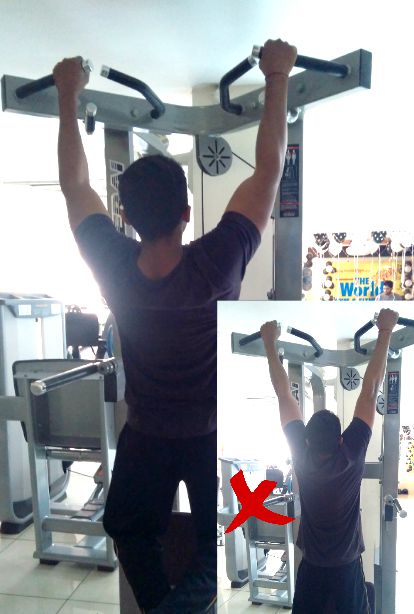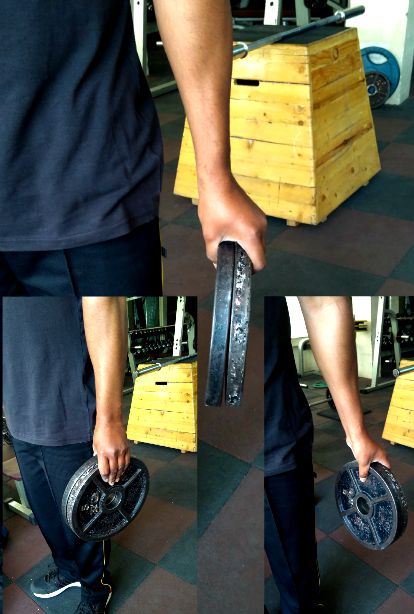Before we talk about increasing your forearm and grip strength, I want to share a true story about my friend… not me. Let’s call him Varun.

So, once Varun’s mum asked him to open a jam jar. He, being a health freak, gave her a long lecture on the unhealthiness of jam and all the processed sugar it contains. Seeing her bored face, Varun shut his mouth and proceeded to open the jam jar.
But, to his absolute shame, the lid did not budge. Can you imagine the look on his mother’s face? Her expression, somewhere between self-satisfaction and disappointment. Even better (or worse) the look on his face of complete humiliation. Varun is not just a health freak but a gym buff as well, spending hours lifting weights.
So what happened?
Did he suddenly lose all his strength?
Is he just weak?
Like his mother, you too must be wondering- what’s the point of lifting weights if you can’t even open a damn jam jar?
Well, this is what happens when you have a lot of power but haven’t learned how to put it to use. All your strength gets transmitted through your forearms and wrists. And when you fail to focus on these muscles, all the power of your body lays dormant because you don’t know how to channel your strength.
It’s like only learning how to make the plane run on the runway and being satisfied with it. But the plane can fly if you know how to make it fly. The body, like the plane, has a potential far beyond your imagination but it all lays useless because of your lack of knowledge. So the goal of this article is to stop doing laps on the runway and learn how to fly.
Table of Contents
The one criteria to choose effective forearm exercises
When it comes to lifting weights, your forearm and grip strength will play a pivotal role in deciding how much you can lift. The flexor and extensor muscles of the forearms are designed to work together.
When these muscles work together i.e. they get contracted together, that’s when you have the most powerful position to grip anything. So the exercises we choose to train our forearms and grip strength should be such that they will give equal contraction to the flexors and extensors.
Always remember the more muscles get involved, the heavier you are able to lift. So, we will choose the exercises that activate the most muscle fibres.
Wrist Curls don’t increase your forearm strength
The above criteria throw out the traditional exercises for forearms that you see a lot of people doing in the gym, hoping to build their forearms but end up with a sore wrist and nothing else.
We will cover, why wrist curls are damaging your wrist in a different post.
But for now, remember this –
A bent wrist is a weak wrist. And a neutral wrist is the strongest position for transmitting the strength of a strong forearm to your grip.
Another thing to remember is that strength and size go hand in hand. That is to say, you don’t need separate exercises to increase your strength and to increase your muscle size. When the strength increases, the size will increase along with it. So doing wrist curls, hoping to increase the size of your forearms, is both useless and unintelligent.
Choose exercises that allow you to generate maximum power, to put a greater challenge on your forearms and to make it grow both in strength and size.
Four exercises to increase your forearm and grip strength
1. Dumbbell/Barbell Static Hold
The ability to hold something. This is the main work of your forearms and grip.
In order to challenge this function of your forearm, take a heavy dumbbell or load up the plates on the barbell and squeeze the handle of the dumbbell or the barbell as tightly as possible. Your intention should be to crush the handle. When you hold the dumbbells, hold them in a ‘natural hang position’ like when you do shoulder shrugs.
All your fingers should be tightly wrapped around the handle, especially your pinky finger, because that is the first to give away when the weight gets heavier to hold. Your thumb will be on top of your fingers.
Hold it till you have the grip that you started with. When the grip starts getting loose, the set is done.
Remember, we are training to grip it not just let it hang in the hand. The goal is not to make just a tight grip but a crushing grip.
2. Dead Hang
Another simple but effective movement.
Hold the handle of the chin-up bar as tightly as you can with your feet in the air. Maintain the tension on your shoulder joints. Fight the urge to let your shoulders slack.
You should be hanging like there is no way you are ever going to let go of the handle. Try to imagine yourself hanging off the edge of a cliff and letting go means going straight to heaven or hell (you know yourself well). The intention here is to keep the grip tight and the body tensed for as long as possible.
Try finding a thick handle. The thicker the handle the more load and stress it will be on the forearms to hang on to it.
3. Farmer’s Walk
Here you will hold the dumbbells in your hands as tightly as you can.
Now you will start walking with the dumbbells. This will not be a normal walk. You will keep your whole body tight. Your shoulders should not be slacking and your spine should be in a neutral position.
The upper body should remain stable and your hands should not move when you are walking. This will be doubly challenging to your forearms and grip strength. When you hold the dumbbell and start walking, the load of the dumbbell will start exerting more pressure on your hands. And your forearms will have to work harder to hold it.
Your movement should look like your whole upper body is still and the movement is happening only in your legs.
4. Plate Pinch
Grab two plates of the same weight and hold them together between your fingers and thumb. Your elbow should be straight. Squeeze the plates as hard as possible.
Hold for as long as you can then repeat the movement with the other arm.
Conclusion –
You can include these exercises as finisher movements at the end of your weight training session. If your grip and forearms are particularly weak, then you can train them every alternate day. This will help you gain strength and increase the size of these muscles.
In case you are still wondering if Varun was able to open the jar. He did, but that day he swore not to skip on training his forearms and has never faced an embarrassing situation like that ever again.
And, neither should you. Having a strong forearm and grip strength is important for overall strength development. Leaving these important muscles out of your training schedule will be a big mistake.



Leave a Reply